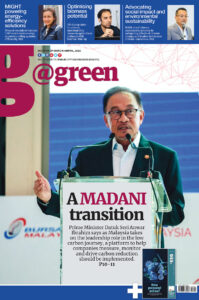There were some success stories but nowhere near the required ambitious commitments
By G. LALCHAND
So COP26 (the 26th Conference of the Parties) Conference on Climate Change, held on Oct 31-Nov 12, 2021, which went into overtime to Nov 13, is over and done with.
It was touted to be “The last best chance” for the global community to make the necessary more ambitious commitments to realise the objective of limiting the global temperature rise due to climate change to “below 20C, and preferably to 1.50C”, by the end of this century, as was agreed under The Paris Agreement (PA) in 2015.
Did COP 26 achieve its ambitious, lofty targets?
The best that can be said about COP26 is that it was neither an unmitigated success nor an unmitigated failure, even though teenage activist Greta Thunberg, the driving force and catalyst behind the global “Fridays For Future” youth movement termed it a “Blah blah blah failure” about halfway through the conference.
This was even before the more serious and meaningful discussions, and debates had started in earnest.
The following may be a biased assessment of the conference when considered against the eventually spelt out outcomes. Nevertheless, Thunberg’s judgment is justified when we believe that today’s global youth (including Malaysians) have to face the adverse consequences of the climate change crisis.
They will be global citizens over the coming decades. They will have to live with the possible “Armagedon-like” impact of the worldwide climate variability that is anticipated if the desired 50 per cent carbon reduction is not achieved by 2030.
Nevertheless, it is not all doom and gloom. There were some success stories from COP26, though they were nowhere near the needed ambitious commitments, and desired to achieve the lofty goals set in the Paris Agreement of 2015.
Some of the noteworthy ones are as follows:
• Forest preservation – 137 countries agreed to halt and reverse deforestation and land degradation by 2030.
• Methane emission reductions – 103 countries committed to a “Global Methane Pledge” to reduce their methane emissions by 30 per cent by 2030 from their 2020 levels.
• Financial support for developing countries – The affluent, more developed “western” countries acknowledged they had not delivered on the Paris Agreement commitment to contribute US$100 billion a year by 2020 to the developing countries, but expressed their confidence to meet the said target by 2023.
• Coal fired power generation – COP26 agreed to “phase down (instead of phase out)” the use of coal for power generation, not by 2050 (as had been hoped for) but by up to a couple of decades later by the largest coal-fired generation users (such as China, India, Indonesia and South Africa).
Considerations: The affluent and more developed “western” countries had gained their current dominant status on the use of coal as a primary energy source for the better part of the last two centuries. Therefore, it is hypocritical for them to impose restrictions on the less affluent developing countries to use the same coal for their economic development. It is more so when the current coal-fired power plants are far more efficient and “clean” than the plants used over the last two centuries.
• Automobiles (cars) – Some of the major automobile manufacturers and countries have established policies to transition to
“zero emission” products and to ban the registration of fossil-fuelled ICE (Internal Combustion Engined) vehicles between 2035 and 2040.
Consideration: The claim of “zero mission” is misleading as even BEVs (Battery EVs) may not be zero-emission, except in a few isolated countries (such as Costa Rica, Iceland, Norway) which have almost 100 per cent RE power generation, while most other countries have yet to transition their power generation to RE. Globally, about 70 per cent of electricity is produced from fossil fuels.
The burden to fight the future climate crisis thus falls on today’s youth, as the older national leaders have failed, over the last few decades, to ensure that we leave our offsprings a naturally and environmentally conducive and healthy planet for them and their descendants.
The good news is that the youth in most countries, including Malaysia, are sincere and passionate CSO (Civil Society Organisation) and environmental activists. They have the opportunity to take on the prevailing government entities and create the “natural, regenerative planet”
for themselves and their offspring.
— @Green













